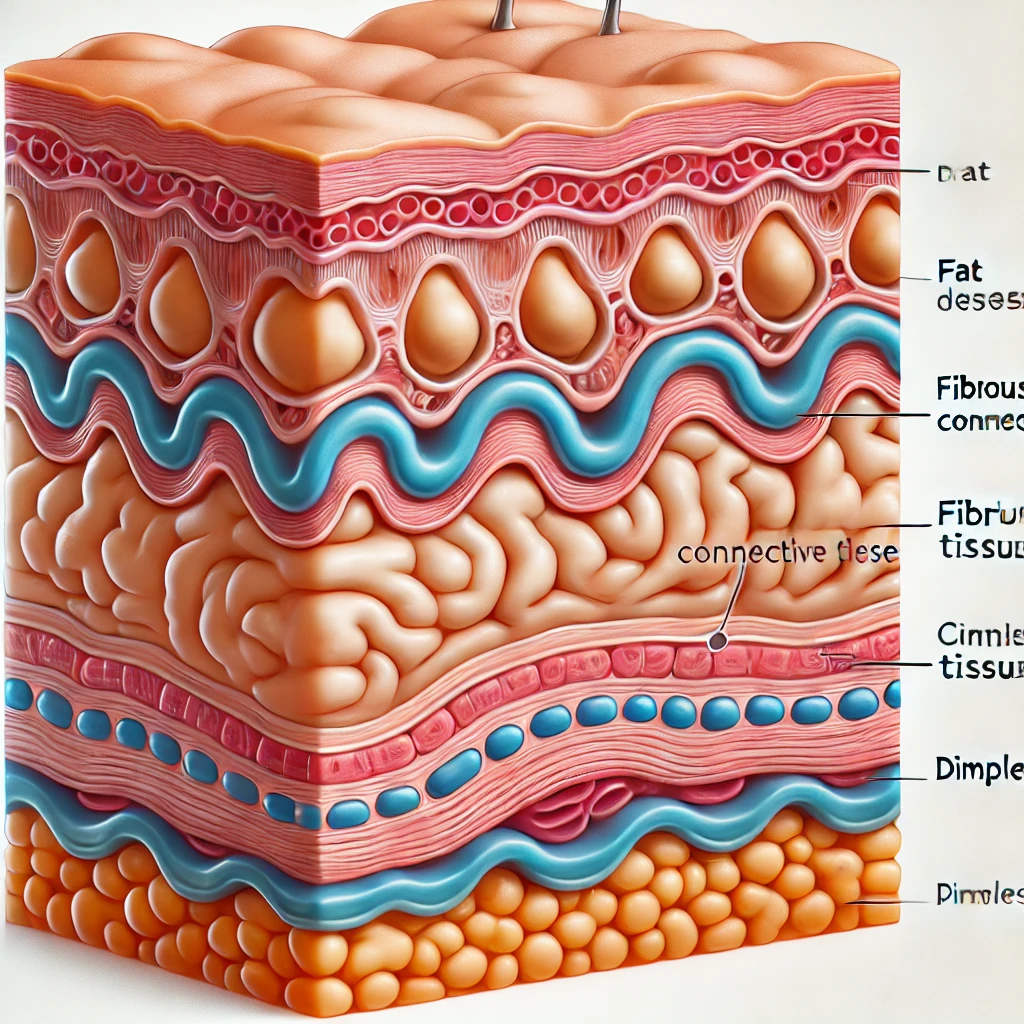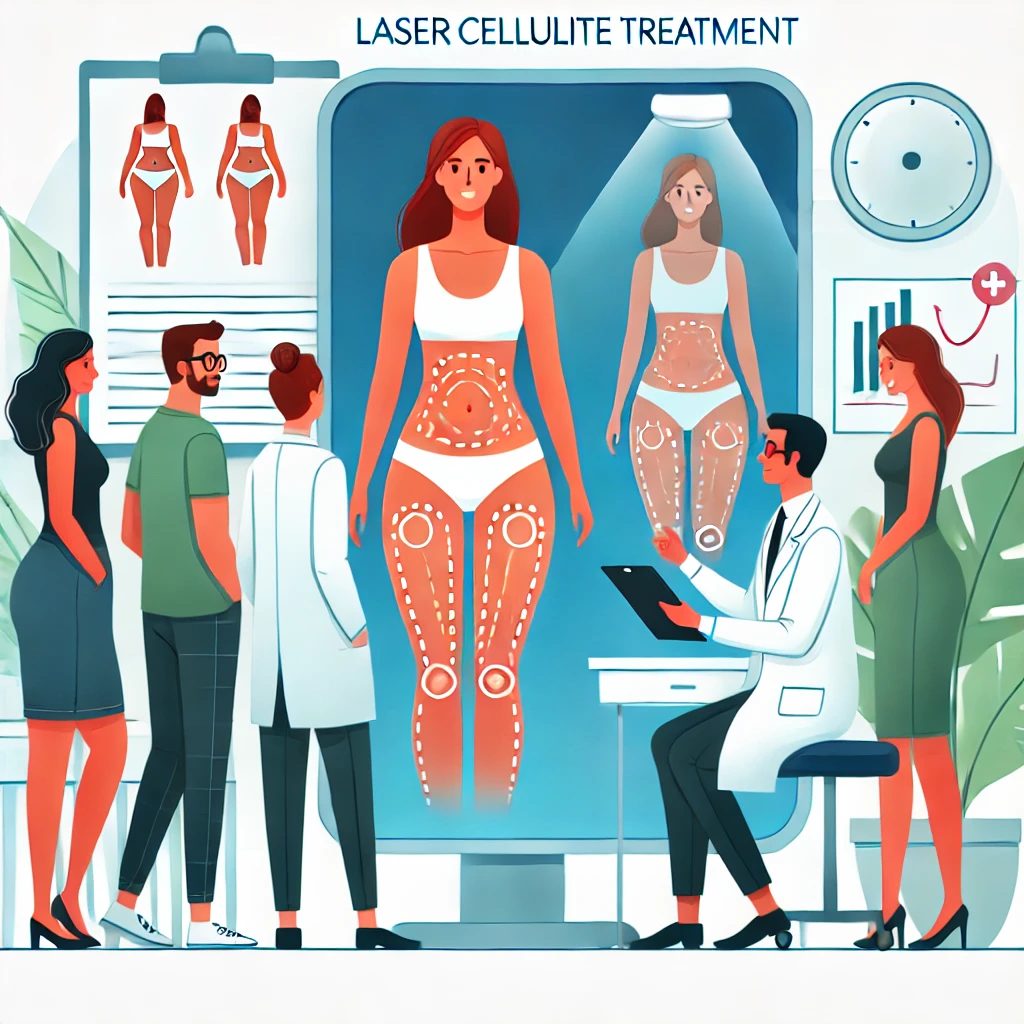So, you’re thinking about getting laser treatment for cellulite? I get it—those stubborn dimples have been hanging around like uninvited guests at a pool party. No matter how many squats, kale smoothies, or fancy creams you try, they just won’t budge. It’s frustrating! But before you jump under the laser, let’s have a real talk about what’s involved—no fluff, no unrealistic promises, just the raw truth you need to know.
What Even Is Cellulite? And Why Is It So Stubborn?

First, let’s bust a common myth: Cellulite isn’t just about fat. Nope! Even the fittest people can have it. It’s a combination of fat deposits, fibrous bands under the skin, and thinning collagen. Think of it like a couch—fat is the stuffing, the fibrous bands are the buttons pulling it inward, and your skin is the upholstery that shows all those little indentations. Fun, right?
Now, onto the good stuff—how laser treatments actually help.
How Does Laser Cellulite Treatment Work?
Lasers for cellulite work in a few ways:
- Melting Fat – Some lasers target fat cells and shrink them down.
- Releasing Fibrous Bands – A major cause of cellulite is the connective tissue pulling your skin downward. Laser treatments can sever those bands, allowing the skin to bounce back and smooth out.
- Boosting Collagen & Elasticity – Heat from the laser stimulates collagen production, tightening the skin and making it look firmer.
Think of it as a three-step attack: shrink, release, tighten. Clinical studies have demonstrated the efficacy of laser treatments in reducing cellulite. For instance, a study published in the Aesthetic Surgery Journal reported that a single, minimally invasive laser procedure using a 1440-nm Nd:YAG laser resulted in significant improvement in cellulite appearance, with results lasting for at least one year. PubMed Central
It’s essential to consult with a qualified healthcare provider to determine the most appropriate treatment based on individual needs and to discuss potential risks and benefits.
Types of Laser Treatments for Cellulite: What’s Your Best Bet?

All lasers are not created equal. Here’s a breakdown of the main players in the cellulite game:
1. Cellulaze™ – The Heavyweight Champion
- What it does: Uses a tiny laser fiber inserted under the skin to melt fat, release fibrous bands, and stimulate collagen production. Cellulaze™ is an FDA-approved laser treatment designed to address cellulite by targeting structural issues beneath the skin. FDA Access Data
Clinical studies have demonstrated that a single Cellulaze treatment can increase skin thickness by 25% and elasticity by 29%, leading to a smoother appearance. - Best for: Moderate to severe cellulite.
- Downtime: About a week of bruising and swelling.
- Results: Can last a year or more!
2. SmoothShapes® – The Chill Contender
- What it does: Uses a combo of laser and suction massage to move fat and increase circulation.
- Best for: Mild cellulite or touch-ups.
- Downtime: None! Walk out and go about your day.
- Results: Temporary—maintenance is needed.
3. Velashape™ – The Spa-Day Favorite
- What it does: A mix of infrared light, radiofrequency, and massage to improve skin texture and reduce cellulite appearance. VelaShape™ is an FDA-cleared non-invasive treatment combining bi-polar radiofrequency, infrared light energy, vacuum, and mechanical massage. FDA Access Data
Clinical studies have shown that VelaShape treatments can lead to an average abdominal circumference reduction of 2.6 cm within ten weeks post-treatment. - Best for: Mild to moderate cellulite.
- Downtime: None.
- Results: A few months, but maintenance is required.
| Treatment | How It Works | Best For | Downtime | Results Duration |
|---|---|---|---|---|
| Cellulaze™ | Uses a tiny laser fiber under the skin to melt fat, release fibrous bands, and stimulate collagen. | Moderate to severe cellulite | About a week of bruising/swelling | 1+ year |
| SmoothShapes® | Combines laser energy and suction massage to improve circulation and smooth the skin. | Mild cellulite or touch-ups | None | Temporary, requires maintenance |
| VelaShape™ | Uses infrared light, radiofrequency, and massage to improve skin texture and reduce cellulite. | Mild to moderate cellulite | None | Several months, requires maintenance |
What No One Tells You About Laser Cellulite Treatment
Let’s get real—there’s no magic bullet for cellulite. Here are some hard truths:
- Results Vary – Some people see a big difference, while others notice only subtle changes. Genetics, skin type, and lifestyle play a big role.
- It’s Not Cheap – Treatments can cost anywhere from $500 to $5,000, depending on the method and provider.
- It’s Not Instant – Full results can take weeks or even months to show up as collagen rebuilds.
- It’s Not Permanent – Maintenance is key. If you go back to sitting all day and living off fast food, cellulite will creep back.
- It Can Be Uncomfortable – Some treatments feel warm and tingly, while others—like Cellulaze—can leave you bruised and sore.
Who’s the Best Candidate for Laser Cellulite Treatment?

Laser treatments work best if you: ✔ Are close to your ideal weight (not a weight loss solution!) ✔ Have moderate cellulite (not deep, severe dimples) ✔ Are willing to maintain results with a healthy lifestyle ✔ Have realistic expectations (good, but not Photoshop-level smoothness!)
Frequently Asked Questions About Laser Cellulite Treatments
How many laser treatments do I need?
It depends on the method and severity of your cellulite. Some treatments require multiple sessions, while others, like Cellulaze™, can work with just one.
Is laser cellulite treatment painful?
Most treatments are tolerable, with mild discomfort. Some people report a warming sensation or slight stinging, while more invasive treatments like Cellulaze may cause bruising and swelling.
How long do results last?
Results can last anywhere from a few months to a few years, depending on the treatment type and how well you maintain your skin health and lifestyle.
Are there any risks or side effects?
Common side effects include redness, swelling, bruising, and temporary soreness. More serious risks are rare but can include skin burns or uneven results.
Can laser treatments completely get rid of cellulite?
While they can significantly improve the appearance of cellulite, no treatment can permanently erase it. Maintenance and a healthy lifestyle are essential for long-lasting results.
Final Verdict: Is Laser Worth It for Cellulite?

If you’re looking for improvement—not perfection—and are willing to maintain your results, laser treatments can be a great option. But if you expect a miracle that permanently erases cellulite, you might be disappointed.
The best strategy? Combine laser with a healthy diet, regular exercise, dry brushing, and collagen-boosting skincare. Think of laser as a power-up—not a total cure.
Your Next Step: Consultation Time!
Before making a decision, book a consultation with a licensed, experienced professional. Don’t just go for the cheapest deal—when it comes to laser treatments, you get what you pay for.
And hey—if you decide lasers aren’t for you? That’s okay, too. Your body is amazing as it is, cellulite or not. But if you do go for it, at least now you’re armed with the facts. 😉
Have You Tried Laser for Cellulite?
Drop a comment below and share your experience! Did it work for you? Would you do it again? Let’s get real about cellulite treatments—because we’re all in this together!
Want More Options?
If laser treatments aren’t quite what you’re looking for, don’t worry—there are plenty of other cellulite reduction methods out there. While lasers can be highly effective, they’re not the only option. Here’s how they compare to other popular treatments:
- Retinol Creams: These work by thickening the skin over time, which can help reduce the appearance of cellulite. While they don’t break down fat or fibrous bands like lasers, they can make skin look smoother with consistent use.
- Dry Brushing: This centuries-old technique stimulates circulation and exfoliates dead skin, giving the skin a temporary firmness boost. However, results are subtle and require daily use to maintain any noticeable difference.
- Radiofrequency Therapy: Similar to laser treatments, radiofrequency devices use heat energy to stimulate collagen and break down fat cells. The main difference? Radiofrequency treatments tend to be less invasive and require multiple sessions to see results.
- Acoustic Wave Therapy: This method uses sound waves to break down cellulite-causing fat deposits. While promising, it typically requires multiple treatments and ongoing maintenance.
- Lymphatic Drainage Massages: These treatments help remove excess fluid and improve circulation, making cellulite temporarily less noticeable. They work best when combined with other treatments.
Each of these methods has its own pros and cons, and the best choice depends on your goals, budget, and lifestyle. Some people find success combining multiple treatments for even better results.
If you’re looking for a broader range of cellulite treatments beyond lasers, check out our guide to the Best Cellulite Treatments and Products. You’ll find expert recommendations on creams, massages, and lifestyle changes that can complement or even replace laser treatments!
Hi, I just recently accidentally discovered your blog, and I really like it. I don’t know how did I get here because I’m a guy and I don’t have cellulite 🙂 However, it seems that you really want to help people, and I appreciate it! In my opinion, the best cellulite treatment is exercising.
Keep up the good work!
Yes, I agree with you, the exercise is the best cellulite treatment, if done correctly. Thanks.
These laser treatments seem to make sense, but they are not cheap I would imagine. But maybe if they are fast, they are worth the money?
I know you recommend the natural method, but sometimes its hard to eat healthily and get that exercise.
Where would you look to find this laser therapy?
Hi Ruth,
You can find laser therapies in many Beauty Clinics nowadays. You need to do some research in your area. Good luck!